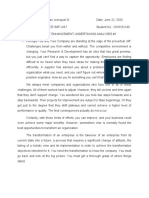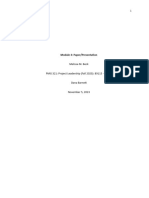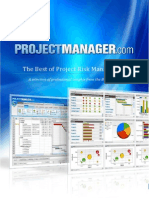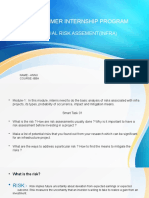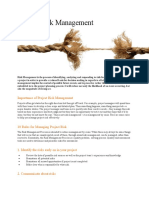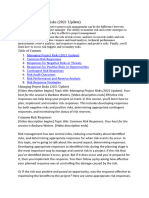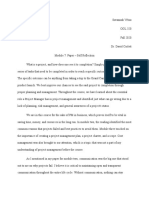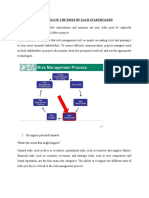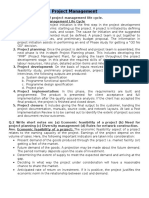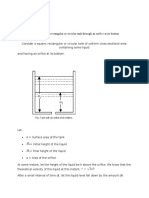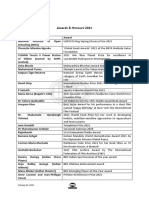0% found this document useful (0 votes)
117 views3 pagesMod 6 Risk Managmentt Worksheet
This document provides a risk management worksheet for a project management course. It includes sections on identifying risks from case studies, reflecting on encouraging diverse perspectives, and answering questions about managing project risks. The key lessons are: having diverse viewpoints is important for risk identification and mitigation; addressing risks proactively is better than ignoring potential issues; and it is important for a project manager to clearly communicate with sponsors if a deadline may be missed to prevent cost overruns or wasted resources.
Uploaded by
api-654832233Copyright
© © All Rights Reserved
We take content rights seriously. If you suspect this is your content, claim it here.
Available Formats
Download as DOCX, PDF, TXT or read online on Scribd
0% found this document useful (0 votes)
117 views3 pagesMod 6 Risk Managmentt Worksheet
This document provides a risk management worksheet for a project management course. It includes sections on identifying risks from case studies, reflecting on encouraging diverse perspectives, and answering questions about managing project risks. The key lessons are: having diverse viewpoints is important for risk identification and mitigation; addressing risks proactively is better than ignoring potential issues; and it is important for a project manager to clearly communicate with sponsors if a deadline may be missed to prevent cost overruns or wasted resources.
Uploaded by
api-654832233Copyright
© © All Rights Reserved
We take content rights seriously. If you suspect this is your content, claim it here.
Available Formats
Download as DOCX, PDF, TXT or read online on Scribd
/ 3

